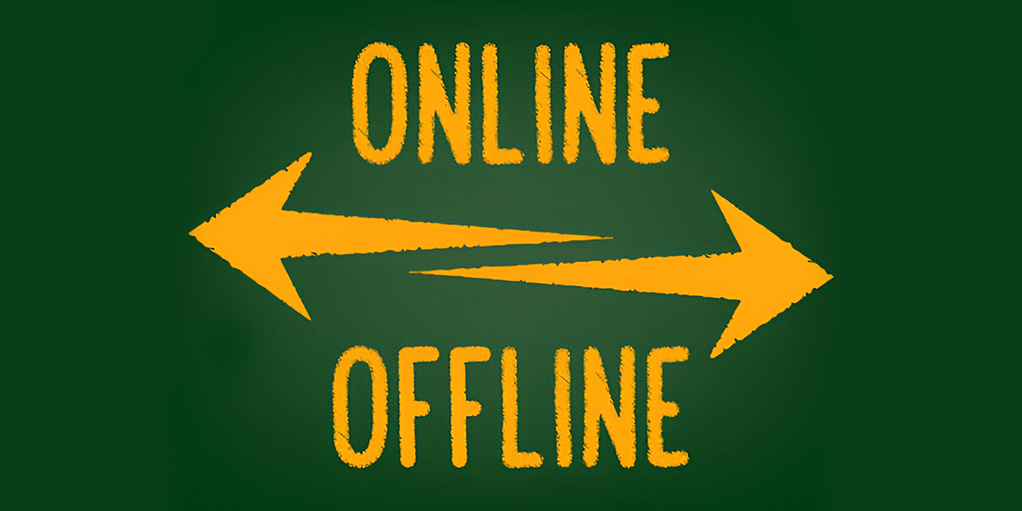Introduction
In today’s dynamic business environment, marketing is crucial in reaching potential customers and driving growth. Businesses have two primary avenues for promoting their products and services: online marketing and offline marketing. Each has unique strengths, and deciding which to prioritize depends on your business goals, target audience, and resources.
This blog will explore the key differences between online and offline marketing, their benefits, and how businesses can decide which approach best suits their needs.
Understanding Online Marketing
Online marketing, also known as digital marketing, refers to promotional activities conducted over the Internet. It includes a wide range of tactics, such as:
- Search Engine Optimization (SEO): Improving a website’s visibility in search engine results.
- Social Media Marketing: Promoting content and products through platforms like Facebook, Instagram, and LinkedIn.
- Email Marketing: Engaging audiences through personalized emails and newsletters.
- Pay-Per-Click (PPC) Advertising: Paid ads on search engines and websites.
- Content Marketing: Creating valuable content to attract and retain customers.
Online marketing particularly appeals to businesses because it offers global reach, advanced targeting, and detailed analytics for performance tracking and optimization.
Understanding Offline Marketing
- Offline marketing encompasses traditional advertising methods that do not involve the Internet. This includes:
- Print Advertising: Newspapers, magazines, brochures, and flyers.
- Broadcast Advertising: Television and radio commercials.
- Direct Mail: Sending promotional materials directly to customers’ homes.
- Billboards and Outdoor Advertising: Physical displays in high-traffic locations.
- Event Marketing: Sponsoring or participating in trade shows, conferences, and community events.
Offline marketing is often seen as more personal and direct, making it effective for businesses that want to establish a local presence or engage with audiences who may not be as active online.
Key Differences Between Online and Offline Marketing
- Reach and Audience
- Online Marketing: Has a global reach. Businesses can target specific demographics based on interests, behavior, location, etc. Online marketing is particularly effective for businesses looking to reach a large, diverse audience or for those selling products internationally.
- Offline Marketing: Usually targets a local or regional audience. While it lacks the global reach of online marketing, it can be highly effective for businesses focused on specific geographic areas. Radio ads, local newspaper placements, and community events are great ways to reach local customers.
- Online Marketing: Has a global reach. Businesses can target specific demographics based on interests, behavior, location, etc. Online marketing is particularly effective for businesses looking to reach a large, diverse audience or for those selling products internationally.
- Cost and Budget
- Online Marketing: Generally more cost-effective, especially for small businesses. Social media ads, email campaigns, and SEO are accessible even with limited budgets. Online platforms like Google and Facebook offer ad tools that allow businesses to set precise budgets, ensuring no overspending.
- Offline Marketing: This can be more expensive, particularly for large-scale campaigns. TV and radio spots, billboards, and print ads often incur higher upfront costs. However, for businesses with a large enough budget, these forms of advertising can offer massive visibility.
- Measurability and Analytics
- Online Marketing: One of its biggest advantages is tracking and measuring performance in real time. Tools like Google Analytics, Facebook Insights, and email marketing software provide detailed data on audience behavior, ad performance, and conversion rates. This allows marketers to adjust strategies on the fly to improve results.
- Offline Marketing: Tracking the success of offline campaigns is more challenging. While businesses can estimate the impact of a billboard or TV ad through increased sales or foot traffic, it’s harder to track precise metrics like ROI or customer engagement. Offline marketing often requires surveys or manual tracking methods to gauge effectiveness.
- Engagement and Interaction
- Online Marketing: Allows for direct interaction with customers. Through social media, businesses can engage with their audience in real-time, respond to comments, and foster a community around their brand. Online reviews, shares, and likes provide valuable feedback on how customers perceive your brand.
- Offline Marketing: Tends to be more one-sided. While businesses can engage customers at events or through in-store promotions, it doesn’t offer the immediate feedback loop that online marketing provides. Offline methods often rely on post-campaign research to understand customer responses.
- Flexibility and Adaptability
- Online Marketing: Offers a high degree of flexibility. Campaigns can be launched, paused, or modified at any time with relative ease. Adjustments can be made instantly without major costs if an ad isn’t performing well. This adaptability makes online marketing suitable for businesses that need to test multiple approaches.
- Offline Marketing: Once an offline campaign is launched, it’s more challenging and costly to adjust. Printed materials can’t be easily changed, and TV or radio slots are typically booked weeks or months in advance. This makes offline marketing less flexible but potentially impactful for well-planned, long-term campaigns.
- Longevity and Impact
- Online Marketing: Content and ads have a shorter lifespan. Social media posts may only be visible for a few hours, and PPC campaigns stop once the budget is exhausted. However, long-term tactics like SEO and content marketing can continue to drive traffic for months or even years.
- Offline Marketing: This can have a longer-lasting impact. A billboard, for example, stays visible to passersby for weeks or months. Similarly, printed materials like brochures or business cards can be kept by potential customers for future reference.
Benefits of Online Marketing
- Cost-Effective: Suitable for businesses of all sizes, with options to scale campaigns based on budget.
- Precise Targeting: Advanced audience targeting based on demographic, geographic, and behavioral data.
- Real-Time Analytics: Immediate feedback on campaign performance, allowing for data-driven decisions.
- Global Reach: Access to customers beyond geographical limitations.
- Flexibility: Easy to modify and adapt to changing market conditions.
Benefits of Offline Marketing
- Tangible Presence: Physical ads create a lasting impression, particularly in local communities.
- Credibility: Traditional media, like TV and print, can enhance a brand’s credibility.
- Less Competition: Fewer distractions in offline media compared to the crowded online environment.
- Broader Reach in Non-Digital Audiences: Ideal for reaching customers who spend less time online or are less tech-savvy.
- Personal Touch: Events and direct mail create personal connections that build trust.
Combining Online and Offline Marketing for Maximum Impact
For most businesses, the ideal marketing strategy involves a combination of both online and offline marketing efforts. This integrated approach allows companies to maximize their reach and capitalize on the strengths of each medium.
- Example: A local restaurant might use online marketing to attract new customers through social media ads and Google My Business listings. At the same time, they can use offline marketing strategies like distributing flyers in the community or hosting events to build local engagement.
By aligning online and offline campaigns, businesses can create a seamless customer journey, reaching audiences through multiple touchpoints and enhancing the overall effectiveness of their marketing efforts.
Conclusion
Online and offline marketing have advantages and play essential roles in business promotion. Online marketing offers scalability, precise targeting, and measurable results, making it ideal for businesses looking to expand their reach. Offline marketing, while more traditional, provides credibility and a lasting local presence.
The choice between online and offline marketing ultimately depends on your business goals, target audience, and budget. For many businesses, a blended approach that leverages the strengths of both strategies will deliver the best results.
By understanding the strengths and weaknesses of each marketing method, you can create a balanced marketing plan that helps you achieve both short-term goals and long-term growth.
To know more about Digital Marketing, Please visit https://paypercampaign.com





